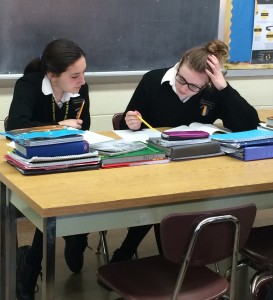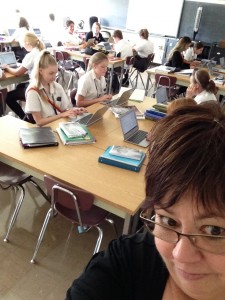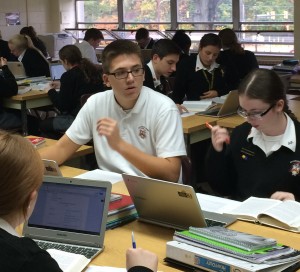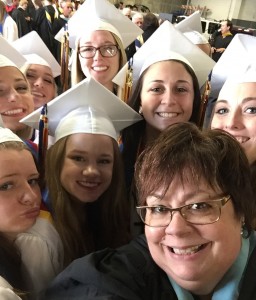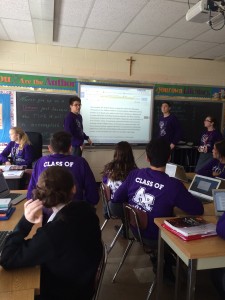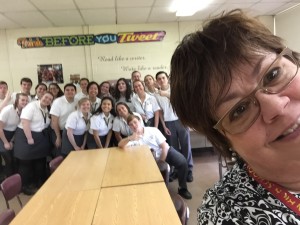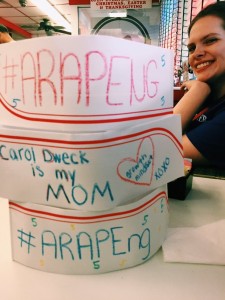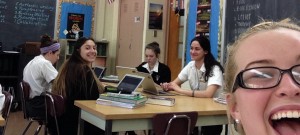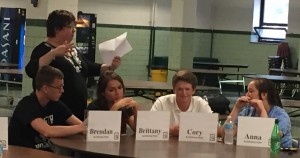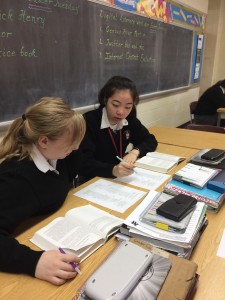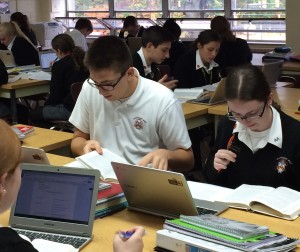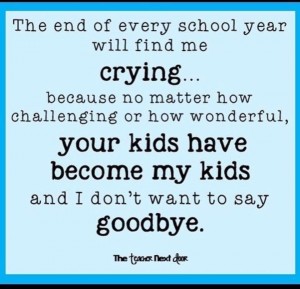Tomorrow, my school anxiety dreams will begin in earnest.
Although many of our counterparts start their school year earlier in August, for those of us in the Philadelphia Catholic and public schools, school officially begins after Labor Day.
Even though I believe we all need this time to rest and relax, August offers us the opportunity to combat those back to school nightmares by taking control of our own life long learning. As we try to fill ou r calendar with all the things we do not get to do during the hectic school year, perhaps we need to look at filling in a few days for our own professional development.
r calendar with all the things we do not get to do during the hectic school year, perhaps we need to look at filling in a few days for our own professional development.
Choosing ONE area to work on or learn more about can make all the difference in rejuvenating our craft in the classroom and putting those nightmares back to sleep.
Here are some ideas for jump starting your 2016-17 school year:
Growth Mindset
Carol Dweck, a professor from Stanford University, has investigated and researched the mindset of successful people, and she has offered educators a way of working with students that focuses on effort instead of ability. There are many online resources available to help teachers transform their classrooms into environments where all students can feel successful, and in fact, learn more. Check out Dweck’s website and make sure to check out the wealth of resources offered by Khan Academy on Growth Mindset. While you are at it, check out the research on the related topic of grit by University of Pennsylvania professor Angela Duckworth.
Genius Hour
Passion based learning is one of the most transformative classroom experiences, providing differentiation just by its nature and engaging students by guiding them to learn about what interests them. What is amazing about this kind of teaching is that students are learning everything we need to teach them in a way that excites them. I think Genius Hour is magical. Take a look at the resources on Genius Hour. Also, take a look at the work of Angela Maiers, and A.J. Juliani.
In fact, there is an awesome opportunity for teachers to take an online course through the Penn Literacy Network with A.J. Juliani during the school year. Make sure you check it out!
Literacy
Have you ever stopped to consider the mindblowing fact that no matter what we teach, we are all teaching Reading, Writing, Listening, and Speaking? This is HOW we deliver our content. This is HOW we prepare our students to learn. And it is HOW we have our students demonstrate their learning. Have you refreshed your literacy toolkit? Check out some of the resources on Edutopia. Spend some time revisiting the common core standards for literacy in History/Social Studies or Science/ Technical Subjects as well as the ELA standards. See what we are expected to teach, then spend time planning ways to make that happen in your classes.
Hands down, the BEST professional development experience I ever had with literacy came from coursework and workshops with the Penn Literacy Network. There is a great ONLINE course available through PLN that would help ANY teacher, 4-12, become more effective in engaging and teaching students. Make sure you check it out!
How do YOU keep on top of current trends and the latest information in your field? Twitter is my favorite tool for developing a personal learning network. Get a handle (mine is @kszym) and follow some key people! Follow @mindsetworks for info on Growth mindset, follow @AngelaMaiers and @ajjuliani for info about Genius Hour and Passion Based Learning, follow @PennLitNetwork for info about Literacy.
Learn about hashtags here, a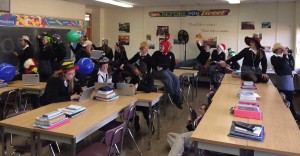 nd about twitter chats here.
nd about twitter chats here.
Tech certification
Want to spice up your technological integration skills? Nothing makes you learn Google Apps for Education like studying for the Google Teacher Certifications. Earning the distinction as a Google Certified Teacher opens doors professionally, but it also shows your students that learning never ends.
Another program that looks interesting for teachers who are already accomplished with tech integration is the Ed Tech Mentor certification available through Common Sense.
Of course, the areas listed above are my favorite areas in my practice of teaching. But it is important to note that what we do is a practice. And like other professions, we need to stay current because there are always new and more effective ways to become better at what we do.
I know that spending some time during the summer reading and learning about my craft not only helps me be more effective in the classroom, but it also tends to ward off the nightmares of losing control of my classroom in front of my principal. Or going to school missing clothing. Or being forced to teach English to all the students of an entire school at the same time in the gymnasium.
My remedy? Extend professional learning and have pleasant dreams!
